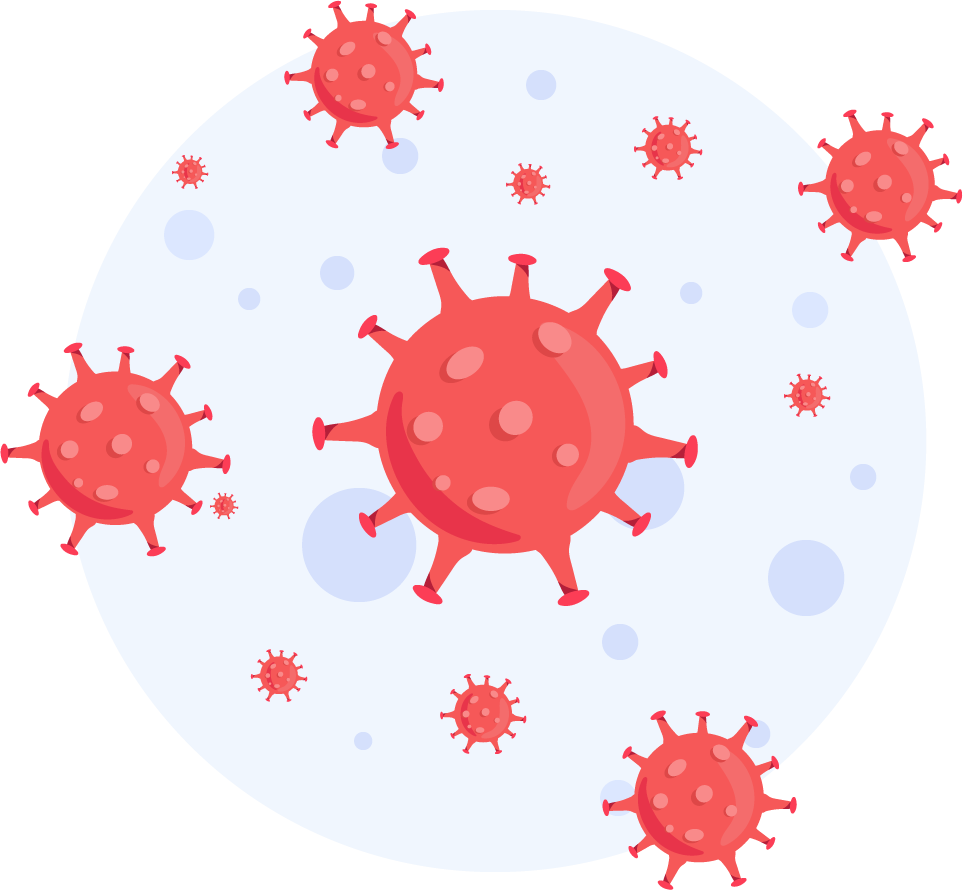
About the disease
Coronavirus (COVID-19)
COVID-19 is a new illness that can affect your lungs and airways. It's caused by a virus called coronavirus. It was discovered in December 2019 in Wuhan, Hubei, China.
Common signs of infection include respiratory symptoms, fever, cough, shortness of breath and breathing difficulties. In more severe cases, infection can cause pneumonia, severe acute respiratory syndrome, kidney failure and even death.
Standard recommendations to prevent infection spread include regular hand washing, covering mouth and nose when coughing and sneezing, thoroughly cooking meat and eggs. Avoid close contact with anyone showing symptoms of respiratory illness such as coughing and sneezing.
How coronavirus is spread
Transmission of COVID-19
Because it's a new illness, we do not know exactly how coronavirus spreads from person to person. Similar viruses are spread in cough droplets.
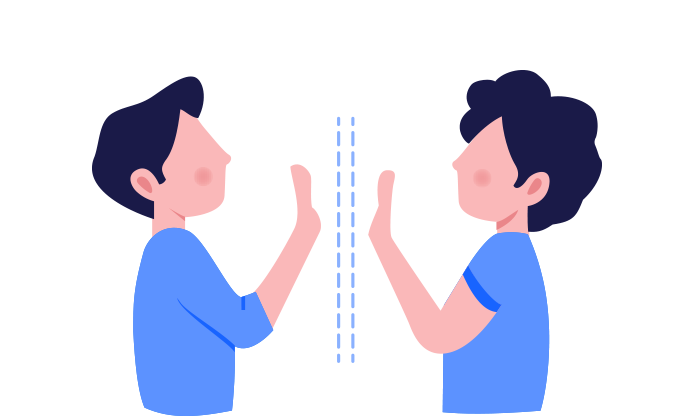
Person-to-person spread as close contact with infected
The coronavirus is thought to spread mainly from person to person. This can happen between people who are in close contact with one another.
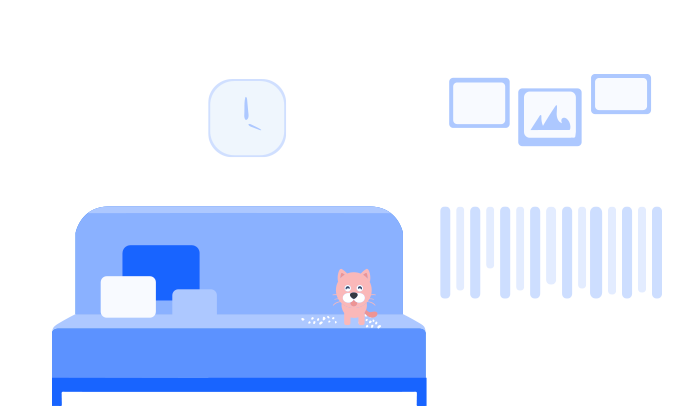
Touching or contact with infected surfaces or objects
A person can get COVID-19 by touching a surface or object that has the virus on it and then touching their own mouth, nose, or possibly their eyes.
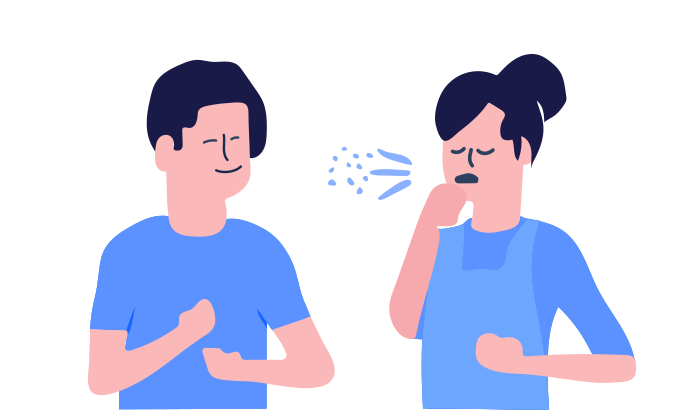
Droplets that from infected person coughs or sneezes
The coronavirus is thought to spread mainly from person to person. This can happen between people who are in close contact with one another.
What are the symptoms of COVID-19?
Symptoms of Coronavirus
The most common symptoms of COVID-19 are fever, tiredness, and dry cough. Some patients may have aches and pains, nasal congestion, runny nose, sore throat or diarrhea. These symptoms are usually mild and begin gradually. Also the symptoms may appear 2-14 days after exposure.
High Fever – this means you feel hot to touch on your chest or back (you do not need to measure your temperature). It is a common sign and also may appear in 2-10 days if you affected.
Continuous cough – this means coughing a lot for more than an hour, or 3 or more coughing episodes in 24 hours (if you usually have a cough, it may be worse than usual).
Difficulty breathing – Around 1 out of every 6 people who gets COVID-19 becomes seriously ill and develops difficulty breathing or shortness of breath.
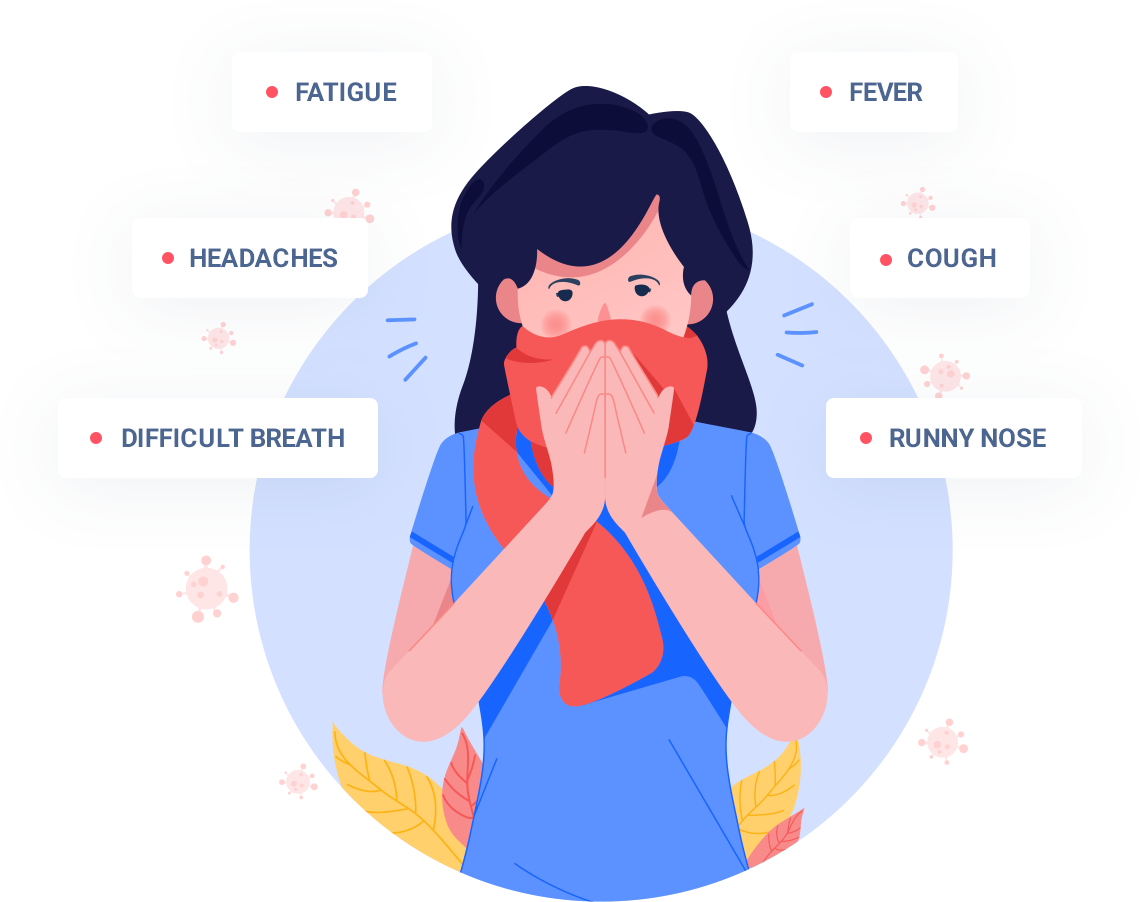
Stay at home and call your doctor: If you think you have been exposed to COVID-19 and develop a fever and any symptoms, such as ctough or difficulty breathing, call your healthcare provider as soon as possible for medical advice.

How to Protect Yourself?
Prevention & Advice
Soap on Hand Regularly and thoroughly clean your hands with an alcohol-based hand rub or wash them with soap and water for at least 20 seconds.
Maintain social distancing Maintain at least 1 metre (3 feet) distance between yourself & anyone who is coughing or sneezing. If you are too close, get chance to infected.
Avoid touching face Hands touch many surfaces and can pick up viruses. So, hands can transfer the virus to your eyes, nose or mouth and can make you sick.
Practice respiratory hygiene Maintain good respiratory hygiene as covering your mouth & nose with your bent elbow or tissue when cough or sneeze.
BENEFITS OF GETTING A COVID-19 VACCINE
COVID-19 vaccines are safe
COVID-19 vaccines were developed using science that has been around for decades.
COVID-19 vaccines are not experimental. They went through all the required stages of clinical trials. Extensive testing and monitoring have shown that these vaccines are safe and effective.
COVID-19 vaccines have received and continue to undergo the most intensive safety monitoring.
COVID-19 vaccines are effective
COVID 19-vaccines are effective. They can keep you from getting and spreading the virus that causes COVID-19.
COVID-19 vaccines also help keep you from getting seriously ill even if you do get COVID-19.
Getting vaccinated yourself may also protect people around you, particularly people at increased risk for severe illness from COVID-19.
Once you are fully vaccinated, you can start doing more
After you are fully vaccinated for COVID-19, you can resume many activities that you did before the pandemic. You can resume activities without wearing a mask or staying 6 feet apart, except where required by federal, state, local, tribal, or territorial laws, rules, and regulations, including local business and workplace guidance.
Frequently Asked Questions
Your Question Answered
What is the source of the virus ?
This is suspected to have occurred for the virus that causes COVID-19. Middle East Respiratory Syndrome (MERS) and Severe Acute Respiratory Syndrome (SARS) are two other examples of coronaviruses that originated from animals and then spread to people. More information about the source and spread of COVID-19 is available on the Situation Summary: Source and Spread of the Virus.
Why is the disease being called coronavirus disease 2019?
There are many types of human coronaviruses including some that commonly cause mild upper-respiratory tract illnesses. COVID-19 is a new disease, caused be a novel (or new) coronavirus that has not previously been seen in humans. The name of this disease was selected following the World Health Organization (WHO) best practiceexternal icon for naming of new human infectious diseases.
How can people help stop stigma related to COVID-19?
People can fight stigma and help, not hurt, others by providing social support. Counter stigma by learning and sharing facts. Communicating the facts that viruses do not target specific racial or ethnic groups and how COVID-19 actually spreads can help stop stigma.
Why might someone blame or avoid individuals and groups?
Discrimination against an identifiable group of people, a place, or a nation. Stigma is associated with a lack of knowledge about how COVID-19 spreads, a need to blame someone, fears about disease and death, and gossip that spreads rumors and myths.Stigma hurts everyone by creating more fear or anger towards ordinary people instead of the disease that is causing the problem.